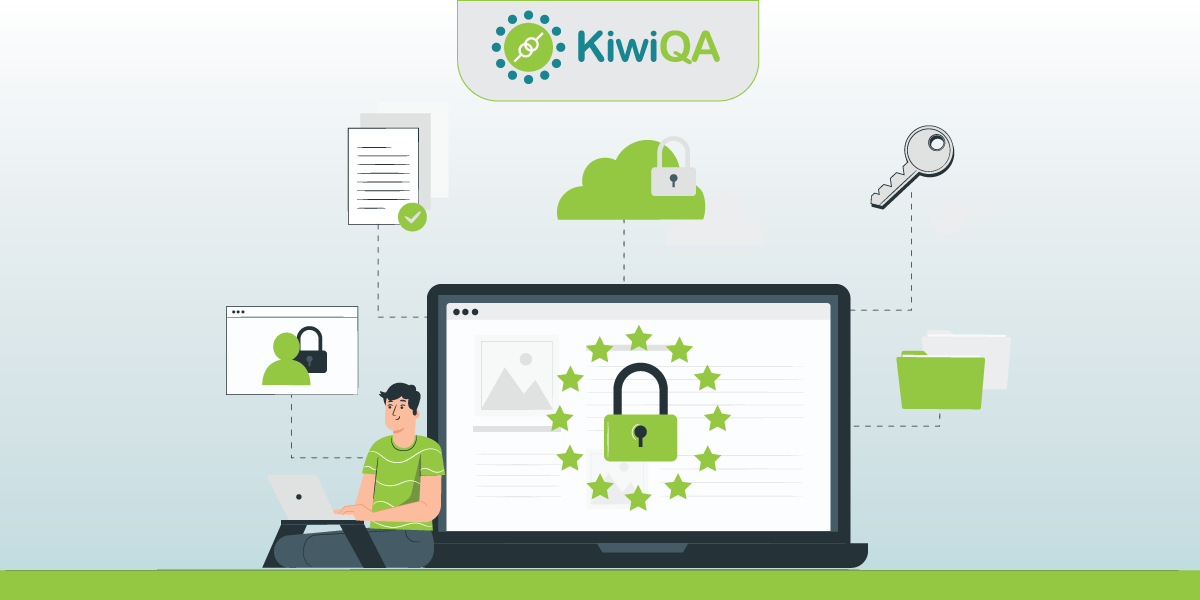Should Small Businesses Opt for Penetration Testing?

 KiwiQA
KiwiQASelf-driving cars, IoT (or connected) devices, and other such advancements in the tech industry have made lives easier for the consumers. On the flipside, such advancements have also opened up floodgates for malicious actors to gather illegal access to data residing in the network and/or devices.
As per reports[1], cyber-crime is expected to cost $10.5 trillion by 2025. Though larger businesses are always at the risk of cyber-attacks; startups & small businesses also need to focus on ‘security’ aspects from the very beginning. Many small companies have the doubt whether penetration (or pen) testing is applicable for a business of a smaller scale.
Though the business might be small, the security and integrity of data must not be exposed to any kind of risk. Cyber-attacks (irrespective of the size) not only leads to financial losses but also dampens the image of the company. The bottom line is that vulnerabilities can exist in software, hardware, and configurations; irrespective of the size or scale of the company.
In this blog, we look at how small businesses can leverage the benefits of penetration testing; while keeping the costs under control. We will also touch base upon how penetration testing consulting services can be leveraged by small businesses to keep data security at the forefront.
Penetration testing (also referred as Pen testing) or security testing is a form of testing methodology for verifying the features (& functionalities) of the product from a security perspective. Ethical hacking techniques are used for gaining illegal access to the system for exploiting potential vulnerabilities in the system.
Security vulnerabilities in the web servers, file system, application logic (front-end and back-end), etc. are attempted for exploitation. Once the vulnerabilities are identified, the respective teams (development, security, SecOps, DevSecOps, etc.) patch the issue.
Penetration testing helps in building a more secure product that is difficult (or potentially impossible) to exploit for any vulnerabilities. As per reports[2], the global penetration testing market size is expected to grow from $1.6 billion in 2021 to $3.0 billion in 2026.
Since every business is vulnerable to security threats, it is important to make penetration testing a regular feature in the big scheme of product development & testing.
Also Read – Things You Should Know About Penetration Testing
Though there are a number of pen testing tools in the market, it is important to choose a tool that suits the project and budget requirements. As a small business owner, you also have the flexibility of leveraging the potential offered by open-source penetration testing tools.
Based on my experience, here are some of the most popular open-source penetration testing tools for checking vulnerabilities in web applications:
ZAP is a popular open-source penetration testing tool that is developed by OWASP (Open Web Application Security Project). The major advantage of ZAP is that it is multi-platform (i.e. it can be used on a range of platforms like Windows, Linux, and more).
Small business owners can leverage ZAP for checking security vulnerabilities during the development as well as testing phases. Being a GUI-based tool makes it easy for experienced as well as newbies to get started with ZAP.
A majority of web applications use SQL as the database for storing information in the DB. The overall impact of SQL injections[3] can be devastating for the business as the vulnerability will provide an opportunity to malicious actors to gain access to vital (and confidential) information stored in the DB.
SQLMap automates the process of detecting and utilizing the SQL injection vulnerability in the website’s database. SQLMap is popular since it supports six types of SQL injection techniques – UNION query, out-of-band, error-based, and more.
SonarQube is one of the most popular open-source pen testing tools in the market. Though the entire implementation of SonarQube is in Java, the best part is that it can be used to perform penetration testing in 20 different programming languages.
In case you are looking to make penetration testing a part of the continuous testing process, you should opt for SonarQube (without blinking your eyes :)). The reason is that SonarQube supports integration with popular CI/CD tools like Jenkins. The vulnerabilities report provided by SonarQube gives out detailed information about the impact of the said vulnerability in different color codes (e.g. Green, Red, etc.).
As a project manager, you can leverage SonarQube to keep a track of the project (from the perspective of software security). SonarQube can expose a range of vulnerabilities like SQL injection, Denial of Service (DoS) attacks, Memory corruption, cross-site scripting, and more.
Apart from the tools mentioned here, some of the other widely-used open-source penetration testing tools are Wapiti, W3af, etc. Startups (or small businesses) that do not have expert resources in penetration testing should seek support from penetration testing services companies that have in-house expertise in pen testing.
Also Read – A Complete Guide to the Stages of Penetration Testing
Now that we have covered the essentials of penetration testing from the lens of a small business owner, let’s look at some of the major pointers that must be included in the risk assessment report:
Small business owners tend to be very busy in their day-to-day hustles. Though hustling is good for the overall growth of the business, it is also important to keep a track of the digital assets being used in running the show.
Examples of digital assets can be HR softwares, internal tools, cloud-based tools, amongst others. It becomes essential to perform security testing of the internal assets, as MSPs (or Managed Service Providers) would be performing a timely security assessment of their tools & services.
Once your team has made a detailed list of the digital assets, the next step is to determine possible threats that the said assets might face. Front-facing applications (or assets) need to be prioritized first since that is the major channel of interfacing with your customers.
Email services, web services, database services, etc. can be prioritized over other assets. The idea should be to focus on systems that have the maximum interface exposure.
Many new-age enterprises use third-party APIs for implementation. Though this helps in expediting the product development, it is also necessary to do a thorough API penetration testing for ensuring that the data is secure to minimize any threat of vulnerabilities.
Once the potential risks (or threats) are identified by using the appropriate open-source (or commercial) tools, the next step is to prioritize those threats. The intent is to fix the high priority ones before the threats that are not so severe in nature.
Systems with high-risk threats (to the business) must be taken up first so that there is minimal (~ zero) negative impact on the business.
Partnering with a penetration testing services company like KiwiQA can help in identifying potential threats at a faster pace. The team of security experts at KiwiQA can work with the in-house team to locate and fix security loopholes at an expedited pace!
Security vulnerabilities in a product can cause a lot of harm to the business since customer’s data and the company’s reputation is at stake. Cyber risks are there in any sector and security assessment must be considered (irrespective of the business size).
The growth of small businesses (or startups) might stall in case its website (or application) becomes a victim of cyber attacks. Small businesses that do not have in-house expertise must partner with penetration testing services companies since they have the experience of working with a wide-range of clients.
To summarize, penetration testing is an absolute must for every business owner (including small & medium businesses)!
Subscribe to our newsletter for some hand-picked insights and trends! Join our community and be the first to know about what's exciting in software testing.
Welcome to the testing tales that explore the depths of software quality assurance. Find valuable insights, industry trends, and best practices for professionals and enthusiasts.

Fill out and submit the form below, we will get back to you with a plan.
 CRN:
22318-Q15-001
CRN:
22318-Q15-001 CRN:22318-ISN-001
CRN:22318-ISN-001 CRN:22318-IST-001
CRN:22318-IST-001